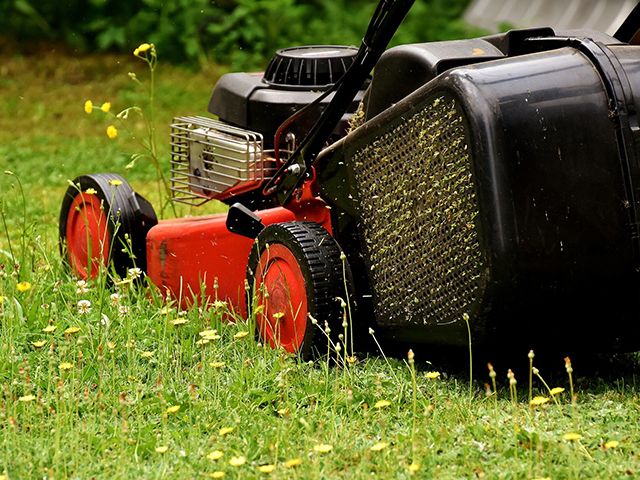
Image credit: Good Homes
19 tricks to allergy-proof your home this hay fever season
Many of us can’t wait for those long Summer days and nights, with plenty of sunshine and time spent outdoors. But the hay fever sufferers amongst us (1 in 4 Brits) will know the warmer weather may also signal runny noses, watery eyes, uncontrollable sneezing and a general feeling of congestion.
Hay fever, also known as allergic rhinitis, is an allergic reaction that occurs when the immune system overreacts to allergens present in the air. It is one of the most common allergic conditions, with an estimated 10 million sufferers in England alone.
Allergy-proof your home this hay fever season
With symptoms peaking between late March and September, we are now mid-hay fever season, with data revealing an average increase in searches for the term “hay fever” of 127% between 2016-2021, peaking every year during June.
But as those long sufferers will know, hay fever doesn’t just strike when you’re outside. Pollen particles can – and do – make their way indoors too, turning your home from a safe haven into an allergy hot-bed.
Thankfully, there are some steps you can take to allergy-proof your home this hayfever season so you can get back to enjoying the balmy weather.
Stop leaving wet towels on your bedroom floor
You might want to think twice about tossing your wet towel on the floor before you head out to work as because it could be a potential reason why allergies intensify when you sleep.
“A wet towel scrunched on the floor is more likely to produce mould,” explains Jade Crook, bedding expert at DUSK. “And breathing in mould can trigger subtle allergic reactions and cause coughing and itchy eyes.”
Jade says putting any used wet towels on a rail will reduce the chances of mould forming and keep your room allergen-free.
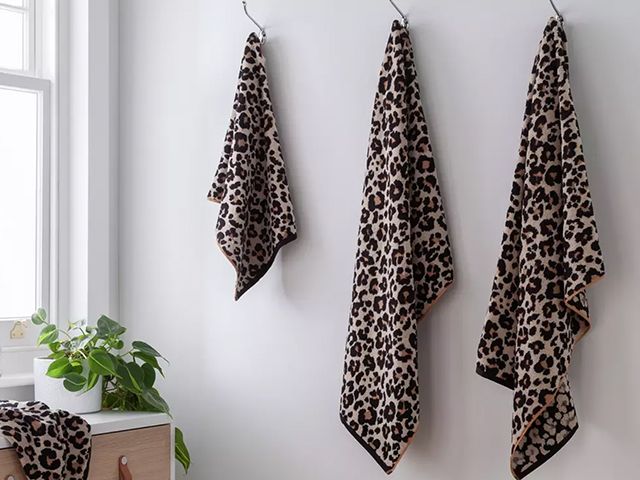
Invest in an air purifier
Investing in an air purifier is useful for those with hay fever as it will remove pollen and dust particles from the air that trigger your symptoms.
“This can be extremely beneficial for clearing your sinuses, which should allow you to fall asleep quicker and more comfortably as a result,” explains Dr Lindsay Browning, psychologist, neuroscientist and sleep expert at And So To Bed.

- White 4 speed air purifier, £32 from Dunelm – buy here
Change your clothes when you get home
Pollen-laden clothes are a hay fever sufferer’s worst nightmare.
“As soon as you return home, it’s important to get out of the clothes on which pollen, dust, and animal hair has settled, to ensure you’re limiting the amount of allergens spreading around your home,” advises Adrian Salt, interiors expert at Terrys.
Getting changed in the bathroom is typically the best idea, as they often have extractor fans which help to draw the pollen out of the room.
“Leave the clothes in a sealed laundry bag or basket in the bathroom until your next wash,” Adrian advises.
Wash your hair before bed
During the day pollen settles on hair and skin.
“That means going straight to bed without showering it off means you’ll cover the bedding and trigger your hay fever symptoms throughout the night,” Adrian warns.
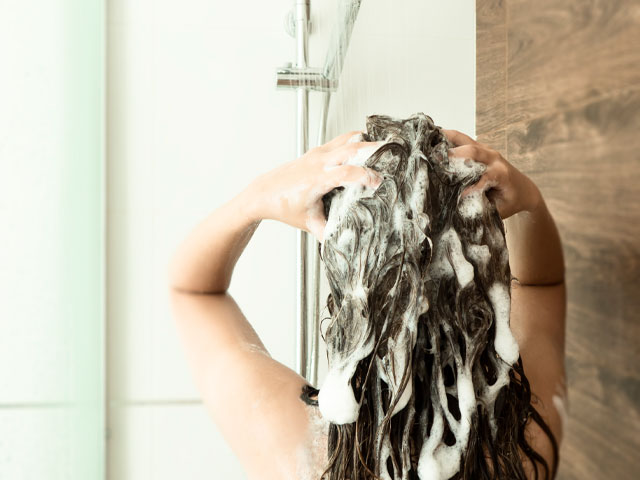
Keep your head elevated
Interestingly, symptoms associated with an allergy are usually worse at night.
“This is because when we lie down, the mucus cannot drain in the same way it would when gravity is helping, leading to disturbed breathing or a cough caused by a post-nasal drip,” explains Lindsay.
For this reason, you should aim to keep your head slightly elevated at night if you are struggling with allergies.
“You might want to try propping your head up with an extra pillow and shifting your sleeping position so you’re slightly more seated,” she recommends. “This will bring gravity back into the mix, allowing excess mucus to drain and not pool and lessening the irritation.”
Dry laundry indoors
Although we love the idea of fresh laundry dried in the sunshine, our newly washed clothes can become a magnet for allergens. So it may be advisable to skip the outside clothes-line on high pollen count days.
“Leaving your clothes, bedding and towels to dry outside on the washing line means pollen will get stuck to them, irritating your symptoms instantly,” Adrian adds.
To combat this, Lindsay advises being mindful of high pollen count times and hanging your washing to dry in the middle of the day when there tends to be less pollen lower to the ground.
“It’s also important to choose the location wisely when it comes to drying your clothes and avoid hanging in areas where there are lots of trees, flowers or grass, as there will be higher levels of pollen there too,” she adds.
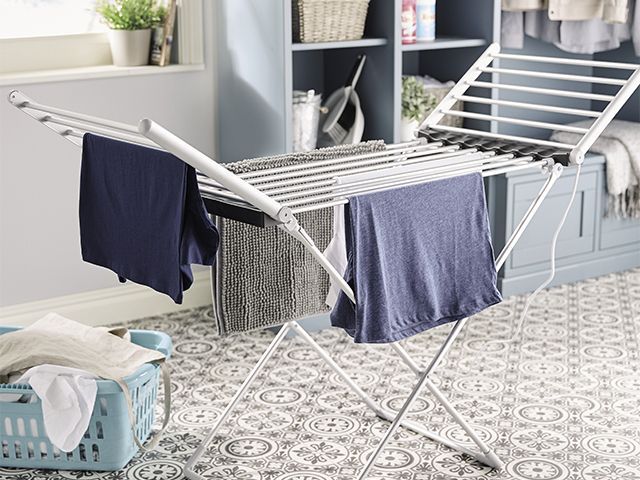
Keep windows and doors closed
Whilst it can be tempting to fling open all the windows and doors to cool the house down, the more open windows, the more pollen that gets blown in to coat your furniture, textiles, and surfaces.
“Keeping windows and doors closed is one of the easiest and most effective ways to minimise the amount of pollen entering your home,” says Adrian. “It’s much better to aerate the home overnight, when the pollen levels drop, and close them again in the morning, if possible.”
Do a damp wipe down of surfaces
Damp dusting is such a simple hack that makes a huge difference to allergy sufferers.
“Giving surfaces a quick wipe down each day will prevent allergens in the air settling on furniture,” advises Adrian. “A simple solution of water and washing up liquid will rid surfaces of any pollen and dust build up.”
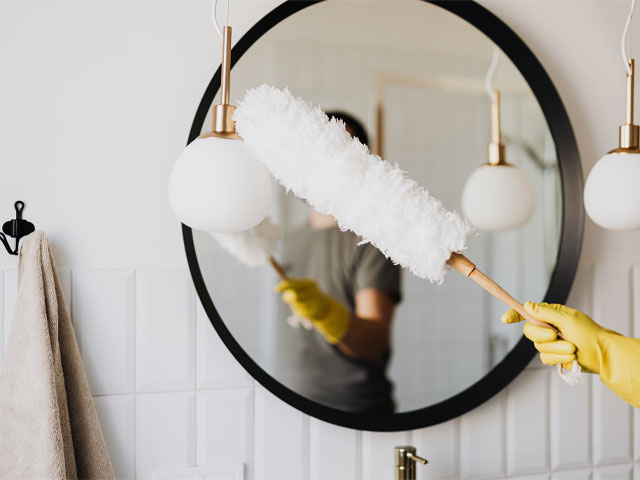
Ensure blinds and curtains are regularly cleaned
Cleaning window dressings is really important for hayfever sufferers. Helen O’Connor, Product and Trends Manager at 247 Blinds explains.
“Take your dusting brush and lightly run along the curtains, left to right. Try to do this on a weekly basis as part of your cleaning routine.
“Vacuuming your curtains should be the second element of your weekly cleaning routine for all lined curtains. Always use the small brush attachment designed for upholstery to avoid causing any damage. Start by closing the curtains fully, hovering over with the vacuum top to bottom before repeating the process on the inside too.
“Not only will this help keep your curtains looking fresh and clean, but will also help minimise symptoms of hayfever or other allergies by thoroughly picking up dust and pollen. To finish, if you have a lint roller to hand, these do a brilliant job at picking up stubborn pollen and dust.”
As for blinds, you should follow a similar process, as Helen explains.
“Ideally, you should clean your blinds once a month to get rid of any dust or pollen that may be lingering on the surface. If you have roller blinds or Roman blinds, just give them a soft dusting and gentle vacuum once a month.
“Venetian blinds or shutters can have a more thorough clean. If they’re the faux wood variety, you can simply wipe down each slat using a damp cloth and some washing up liquid, then finish up with a quick dusting to ensure they’re pollen-free! Run over each slat with a dryer sheet once clean to prevent dust from settling on them again!”
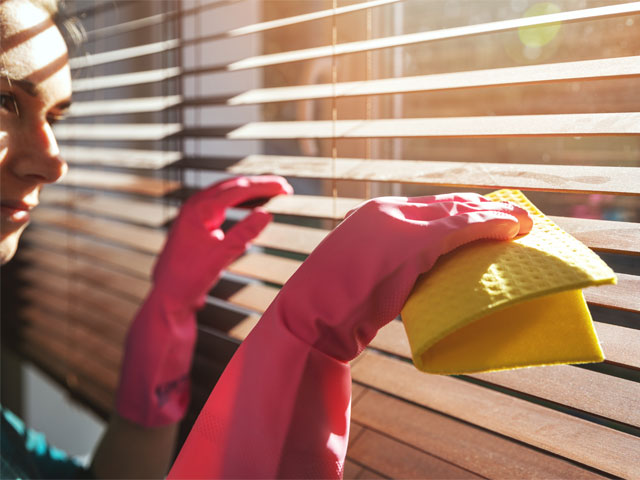
Clean your headboard and vacuum your mattress
If allergies feel worse in the morning, it could be down to what you are sharing your bed with. An estimated 12 million Brits suffer from allergies caused by dust mites, so it’s a good idea to clean down your headboard and hoover your mattress.
“When you’re trying to sleep with hay fever, it’s important to stay on top of regularly cleaning your bedroom to prevent dust (and allergens) from building up,” advises Lindsay. “Ensure you frequently vacuum the carpet, dust your surfaces and mattress to make sleeping easier.”
Switch up your pillowcase
We spend around a third of our lives sleeping, and if there is one place that pollen is likely to stick around when transferred indoors, it is where we rest our head at night.
A senior interior stylist from NEXT suggests switching pillowcases from cotton to silk.
“Allergies are extremely common, and for those who suffer, it’s important that we adapt things around the home to squash symptoms,” she explains. “One thing we can do in our homes that can help reduce symptoms of hay fever is change to silk bedding.”
Silk bedding is often recommended for allergy sufferers due to its hypoallergenic properties and the way it repels common allergens.
“Real silk fibres are coated with a protein known as fibroin. Fibroin repels dust mites, which are a major source of allergic irritation. Sericin also makes silk resistant to mould, fungus, and bacteria,” she continues.
Silk also has natural temperature-regulating properties that help maintain a dry environment.
“Dust mites thrive in warm and humid conditions, so silk’s ability to wick away moisture can deter their growth,” she adds. “By keeping the bedding environment cool and dry, silk reduces the likelihood of dust mite infestation, ultimately benefiting those prone to dust mite allergies.”
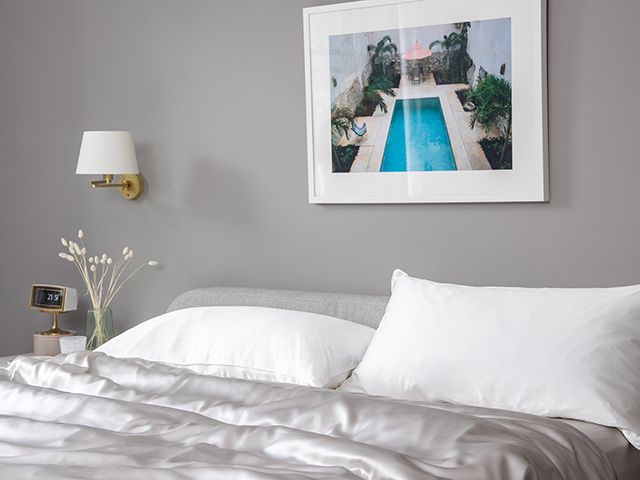
Declutter, declutter, declutter
For hay fever sufferers, spring cleaning needs to take place all year round.
“Decluttering the home regularly helps to remove items that can create a build-up of dust and dirt, meaning allergens will struggle to stick around with little to attach themselves to,” NEXT’s senior interior stylist suggests.
To prevent pollen accumulating in concealed areas, it is essential to declutter your living space.
Miroslav Radov, the owner of the London Rubbish Removal Company, suggests eliminating any unnecessary items and organising or storing clutter throughout the home.
“To support an allergen-free home environment, consider donating or repurposing items you no longer use,” he adds. “Effective waste management not only prevents the build-up of dirt and allergens indoors but also minimises hiding spots for pollen.”
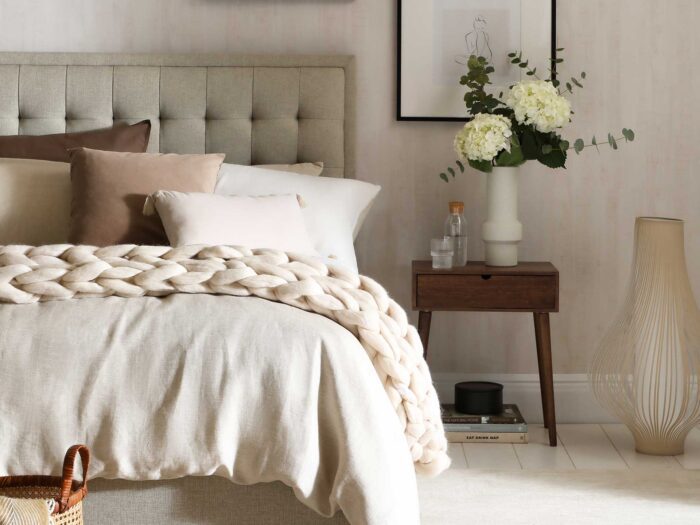
Bathe pets more often
As much as we love our furry friends, pets can bring all kinds of dirt into the home, including allergens which can be spread by shedding fur throughout the home
“It may be surprising to find that pets can collect dust, mould, and pollen in their fur, so it’s essential to bathe them more frequently during allergy season,” advises Miroslav.
“Consider restricting their access to areas like your bed, bedroom or sofa to minimise the transfer of allergens in the home.”
Owning a pet also means it is best to vacuum more frequently to clean up any pet hairs that may shed throughout different rooms in the house.
“Opt for a vacuum cleaner which has a HEPA filtration system, which works by trapping a larger number of small particles,” NEXT’s senior interior stylist advises. “This means thorough results when cleaning around the home.”

Choose pollen-free or low-pollen plants
In the UK, hay fever season typically runs from late March to early September, with sufferers being triggered by tree, grass and even weed pollen.
“In order to avoid hay fever symptoms, it is important to choose pollen free or low-pollen plants when gardening,” advises Miroslav. “Plants such as geranium, iris, ferns, hosta, rosemary, begonia, tea plants, clematis, lilies and daylilies are all low-pollen plants.”
It’s also important to choose the right plants to keep your home free of allergens.
“Recommended indoor houseplants with low pollen content are pansies, periwinkle, tea plants, marigolds, thyme, golden pothos, lounge palm and aloe vera,” Miraslov adds.
He also advises being careful with the placement of plants and flowers inside your home.
“Try to avoid sleeping near them, allocate plant-free rooms and be sure to place them away from windows and doorways,” he adds.
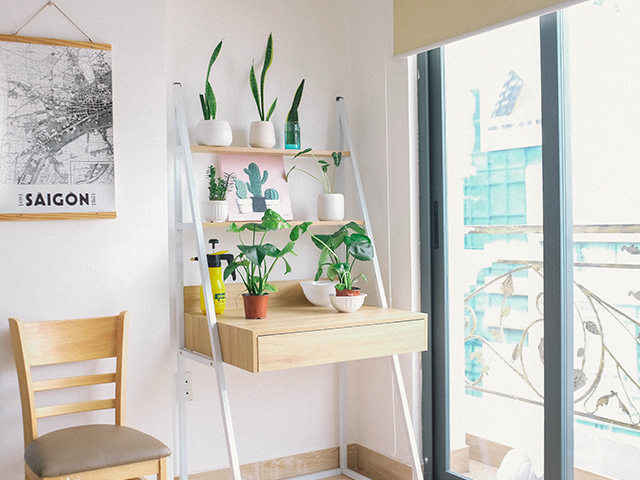
Steam mop floors regularly
A home with laminate, tile or wooden flooring can easily collect a build-up of dust.
“The best way to prevent this is to use a steam mop to deep clean the floor, and ensure any particles are thoroughly washed away,” explains NEXT’s senior interior stylist.
The 16-in-1 Steam Mop by Tower from Next retails at £45 and uses steam to deep clean both carpets and hard floors.
Regularly wash bedding
To maximise the allergy-reducing benefits of silk bedding, it’s important to maintain hygiene.
“Regularly washing silk sheets, pillowcases, and duvet covers in gentle detergents and following the manufacturer’s care instructions will help keep them clean and free of allergens,” NEXT’s senior interior stylist adds.
Also make sure to dry them inside or use the tumble drier, especially when pollen count is high.
This will help prevent pollen getting onto your bedding and allergen spikes.
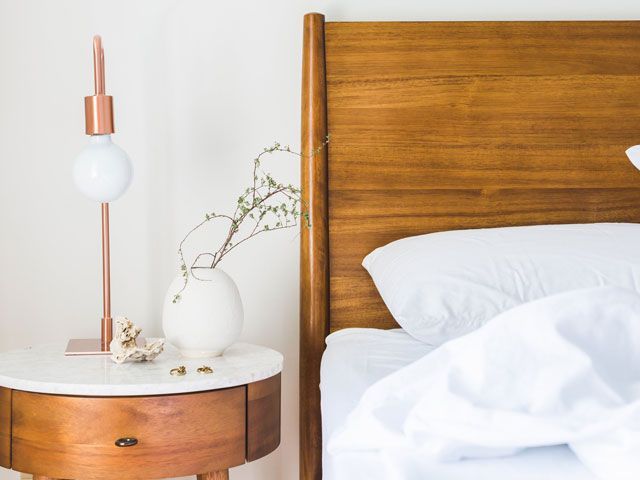
Check the pollen count
To prevent and better manage hay fever symptoms, the Met Office UK recommends using websites/apps to monitor pollen forecasts to stay inside/outside as appropriate. Levels can be checked here.
Keep on top of the gardening
Keep your garden clean by mowing unnecessary grass and cutting weeds regularly every week.
“Similarly, practices such as recycling green waste, mulching, pruning and trimming plants are key, as they promote air circulation and reduce the build-up of dead plant material and mould that can attract pollen and pests,” Miroslav adds.

Purify the house and garden during the right hours
The key to keep your garden spotless and allergy-free is to take care of it at the right times.
“The highest pollen count accumulates between 5am and 10am and between 7pm and 10pm,” explains Miroslav. “It’s best to stay out of the garden at these times and enjoy or work in the garden in the late afternoon, early evening — or even before dawn if you’re an early riser.”
When ventilating the house, you should avoid these peak pollen hours.
“During these hours you can make use of air conditioners and air purifiers, as they will cool your home safely thanks to their pollen-filtered air,” Miroslav adds.
READ MORE




